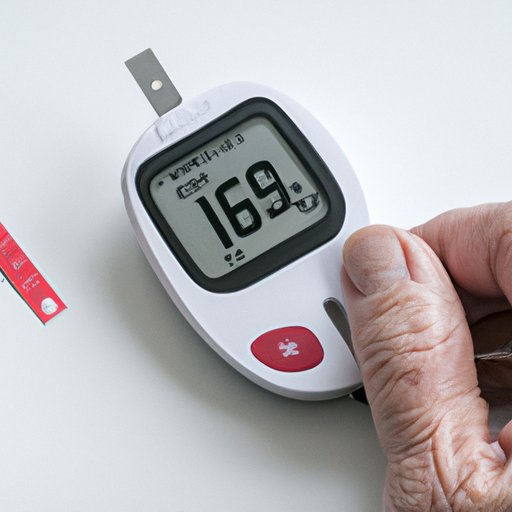Introduction
If you or a loved one is living with diabetes, understanding bolusing is essential to staying healthy and managing blood sugar levels. Bolusing is the process of delivering a quick-acting dose of insulin to counteract the rise in blood sugar that occurs after eating or drinking with carbohydrates. In this article, we will explore what bolusing is, its importance, different types of boluses, how to use them, and how to troubleshoot common bolusing problems.
The Basics of Bolusing: What it is and Why it Matters
Bolusing is a vital part of diabetes management, especially for those who require insulin to regulate their blood sugar levels. When we eat and drink, carbohydrates are broken down into glucose, which enters the bloodstream, causing blood sugar levels to rise. Insulin is a hormone that regulates blood sugar levels by allowing glucose to enter our cells. Bolusing delivers a quick-acting dose of insulin to counteract the rise in blood sugar and bring it back to healthy levels.
There are several methods of delivering insulin for bolusing, including insulin pumps, pens, and syringes. Insulin pumps deliver insulin continuously throughout the day, with additional boluses delivered manually before meals or snacks. Pens and syringes are used to deliver insulin manually, with a bolus delivered before or after meals. Each method has its advantages and disadvantages, and the choice depends on personal preferences and lifestyle.
Different Types of Boluses and How to Use Them
There are several different types of boluses used for insulin delivery, including standard, extended, and dual wave boluses.
Standard boluses are a single dose of insulin delivered manually or through an insulin pump that immediately reduces blood sugar levels. This type of bolus is best used for meals or snacks that are quickly absorbed by the body.
Extended boluses deliver half the insulin dose immediately, with the other half delivered over a specified period, usually up to six hours. This type of bolus is best for meals or snacks with a slower absorption time, such as pizza or pasta.
Dual wave boluses are a combination of both standard and extended boluses, delivering a specified amount of insulin immediately and a second part of the dose over a set period. This type of bolus is used for meals or snacks that are high in fat, protein, and carbohydrates, such as cheeseburgers or ice cream.
When using a pump, it’s essential to consider factors such as basal rates, correction factors, and insulin-to-carbohydrate ratios, which can affect bolus insulin needs. For manual injections, proper injection technique, site rotation, and timing are crucial to ensure that insulin is absorbed effectively and blood sugar levels remain stable.
Bolusing for Beginners: A Step-by-Step Guide
Managing medications can be challenging, especially for those who are new to bolusing. Here is a step-by-step guide:
- Calculate the insulin dose needed based on the number of carbohydrates about to be consumed and the insulin-to-carbohydrate ratio.
- Check and record your blood sugar levels before eating.
- If blood sugar levels are high, use a correction factor to adjust the insulin dose.
- Deliver the bolus through an insulin pump, a pen, or a syringe based on the appropriate dose.
- Monitor blood sugar levels regularly to ensure that they remain stable.
It’s a good idea to work with a healthcare provider or diabetes educator to calculate the appropriate insulin dose and manage medication effectively.
The Role of Bolusing in Carbohydrate Counting
Carbohydrate counting is a useful tool for managing blood sugar levels, especially for those who bolus insulin. When counting carbohydrates, it’s essential to consider the type of carbohydrate consumed and how it affects blood glucose levels. For instance, foods high in simple sugars, like candy or fruit juice, can raise blood sugar levels more rapidly than complex carbohydrates, such as vegetables or whole grains.
Calculating the appropriate insulin dose for bolusing requires a good understanding of carbohydrate counting and an understanding of insulin-to-carbohydrate ratios. These ratios vary depending on a person’s age, weight, activity level, and insulin sensitivity. It’s crucial to work with a healthcare provider or diabetes educator to determine the appropriate ratios and regularly monitor blood sugar levels.
Troubleshooting Bolusing Problems
Although bolusing is an effective way to manage blood sugar levels, it’s not always straightforward. A few common problems that may arise include:
- High or low blood sugar levels
- Inconsistent absorption of insulin
- Injections that are painful or uncomfortable
If you experience any of these problems, there are several solutions. High or low blood sugar levels may require adjusting the insulin-to-carbohydrate ratio or correction factor. Inconsistent absorption can be addressed by rotating injection sites and ensuring proper injection technique. If injections are painful or uncomfortable, consider using a smaller needle or numbing cream to help with discomfort.
Bolusing for Athletes with Diabetes
Bolusing insulin can be especially challenging for athletes with diabetes who engage in physical activity regularly. Exercise can have a significant impact on blood sugar levels, which can make it challenging to manage diabetes properly.
It’s essential to adjust bolus insulin doses based on the intensity and duration of the exercise. This requires closely monitoring blood sugar levels before, during, and after exercising. Athletes should also consider consuming carbohydrates before exercising to prevent low blood sugar levels and staying adequately hydrated. It’s essential to work with a healthcare provider or diabetes educator to determine the appropriate insulin doses, monitor blood sugar levels, and ensure optimal blood sugar control during exercise.
Conclusion
Bolusing is a vital part of diabetes management, especially for those who require insulin to regulate blood sugar levels. It’s essential to understand the different types of boluses, how to use them, and how to troubleshoot common problems to manage diabetes effectively. Bolusing requires a good understanding of carbohydrate counting, insulin-to-carbohydrate ratios, and an understanding of how exercise affects blood sugar levels. With a little bit of practice and patience, anyone can learn to bolus insulin successfully.
© 2021 All Rights Reserved.
